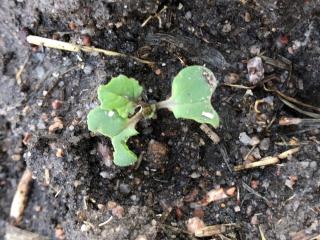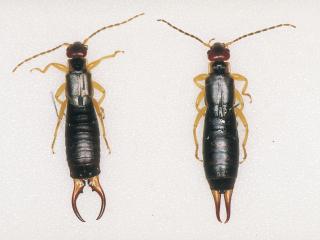Weevils and European earwigs are damaging canola crops
Weevils
- Quairading
Dani Whyte (Planfarm) has found chewing damage to cotyledons in newly germinated canola at Quairading. She suspects the damage was caused by weevils which can be very hard to find as they hide and play dead with their legs tucked which helps them blend in with their surroundings.
Three species of weevils typically damage canola: vegetable weevil, desiantha (spotted vegetable) weevil and small lucerne weevil.
Sometimes crop damage is restricted to paddock edges or where capeweed was in abundance the previous year.
Weevils can be difficult to control as they often require higher rates of insecticide (for example, vegetable weevils) and can be sheltered from insecticide contact within the stubble and trash. For insecticide recommendations to control vegetable weevils in canola see the department's 2019 Autumn Winter Insecticide Guide.
For tips on diagnosing and managing weevils in canola visit DPIRD’s Diagnosing weevils in canola page.
European earwigs
- Jerramungup
European earwigs are causing damage to canola at the 5 leaf stage at Jerramungup.
European earwigs are a recurring pest on properties. These pests do not just cause damage to canola at emergence but have also been known to strip canola at the 10 leaf stage to the stem.
Insecticides especially chlorpyrifos or alphacypermethrin applied at the highest registered rates do have efficacy against European earwig as a contact only. However European earwigs can be difficult to control as they hide under stubbles. Sprays applied at night have worked better than sprays applied during the day as earwigs are more active at night.
For more information on this pest refer to DPIRD’s Diagnosing European earwig page.
If you are having trouble finding and identifying damaging insect pests in emerging crops refer to the 2019 PestFax Issue 1 Tips for monitoring and identifying insects in emerging crops article.
For more information contact Dustin Severtson, Development Officer, Northam on +61 (0)8 9690 2160 or Svetlana Micic, Research Officer, Albany on +61 (0)8 9892 8591.


